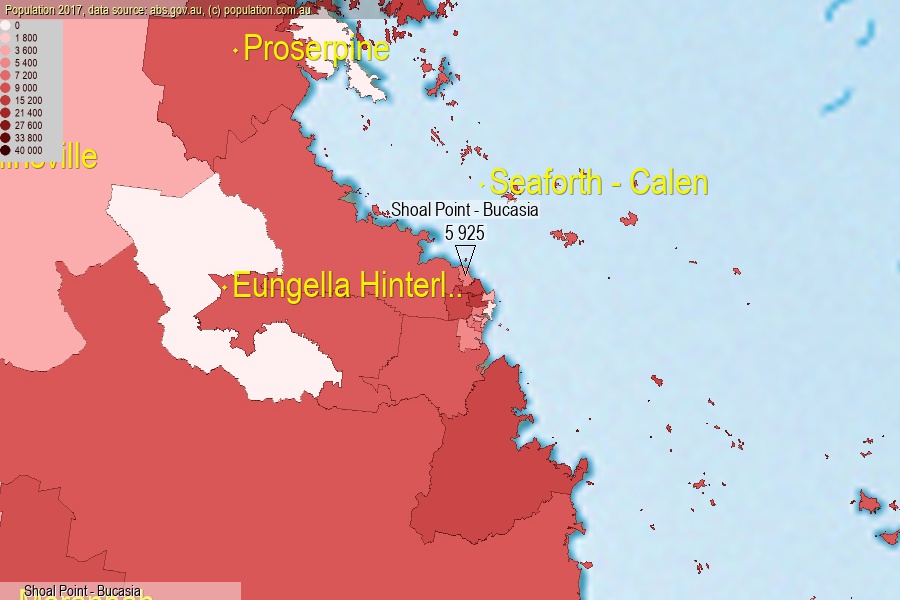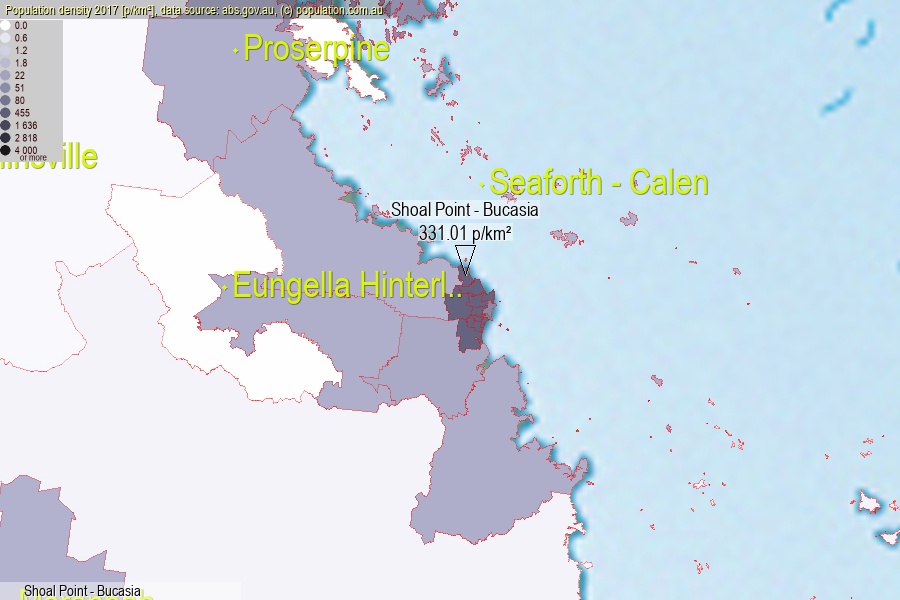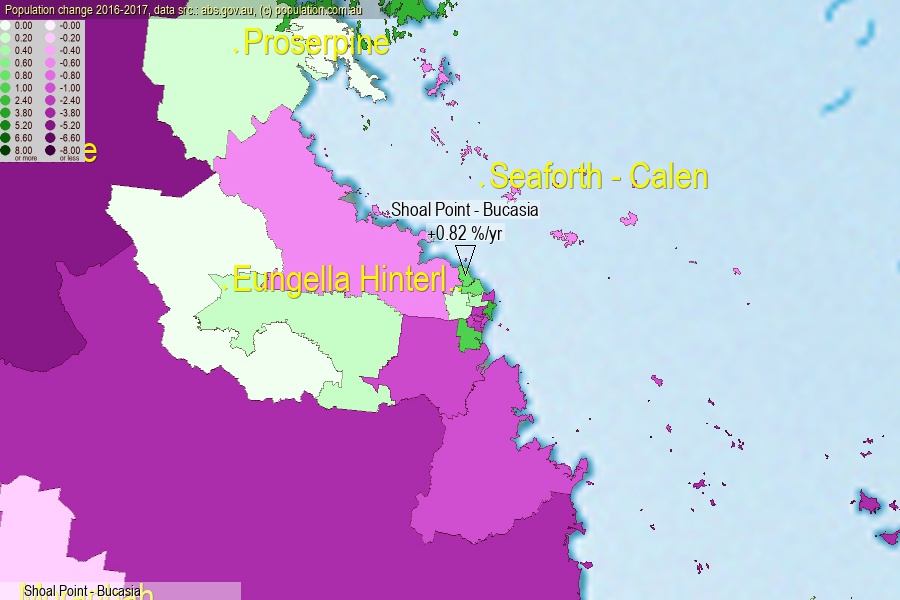 population.com.au
population.com.auLast official estimated population of Shoal Point - Bucasia (as Statistical Area Level 2) was 5 925 people (on 2017-06-30)[2]. This was 0.02% of total Australian population and 0.119% of QLD population. Area of Shoal Point - Bucasia is 17.90 km², in this year population density was 331.01 p/km² . If population growth rate would be same as in period 2016-2017 (+0.82%/yr), Shoal Point - Bucasia population in 2025 would be 6 323. [0]



Click to enlarge. Shoal Point - Bucasia is located in the center of the images.
Population [people], population density [p./km²] and population change [%/year] [2]
View borders » (new window) [4]
[1991-1992] +4.73 %/Yr.
[1992-1993] +4.92 %/Yr.
[1993-1994] +2.80 %/Yr.
[1994-1995] +4.29 %/Yr.
[1995-1996] +3.52 %/Yr.
[1996-1997] +3.25 %/Yr.
[1997-1998] +0.73 %/Yr.
[1998-1999] +0.30 %/Yr.
[1999-2000] +1.84 %/Yr.
[2000-2001] +1.63 %/Yr.
[2001-2002] +5.20 %/Yr.
[2002-2003] +5.94 %/Yr.
[2003-2004] +7.49 %/Yr.
[2004-2005] +6.94 %/Yr.
[2005-2006] +4.42 %/Yr.
[2006-2007] +4.78 %/Yr.
[2007-2008] +2.25 %/Yr.
[2008-2009] +4.46 %/Yr.
[2009-2010] +3.16 %/Yr.
[2010-2011] +3.38 %/Yr.
[2011-2012] +5.85 %/Yr.
[2012-2013] +0.55 %/Yr.
[2013-2014] +1.06 %/Yr.
[2014-2015] +0.10 %/Yr.
[2015-2016] -0.22 %/Yr.
[2016-2017] +0.82 %/Yr.
[0] Calculated with linear interpolation from officially estimated population
[1] Read more about SA2 and Australian Statistical Geography Standard (ASGS) on abs.gov.au
[2] Population data from Australian Bureau of Statistics (Population and density: 2017; change: 2016-2017)
[3] Digital Boundaries: Australian Statistical Geography Standard (ASGS) 2016.
[4] Border coordinates are simplifyed using Ramer-Douglas-Peucker algorithm.